Nelson Museum of the West; textile ornamentation
You can imagine my delight on the third day of our four week trip we visited a museum that had ornamented textiles in the collection! I had no expectation of seeing any embroidery other than the "I, Bathya" sampler during the workshop at The Attic in Mesa, AZ, with Nicola Parkman. We were traveling to rest and renew. Whatever came our way would be interesting and we had few definite plans. Don't you love it when something delightful happens unexpectedly?
The Nelson Museum of the West is in Cheyenne, Wyoming. Firstly, we loved Cheyenne! The people are friendly and the town itself is charming. On the last morning we were there, we visited the museum, hoping to learn more about Native American culture and the settlement of the western part of the USA.
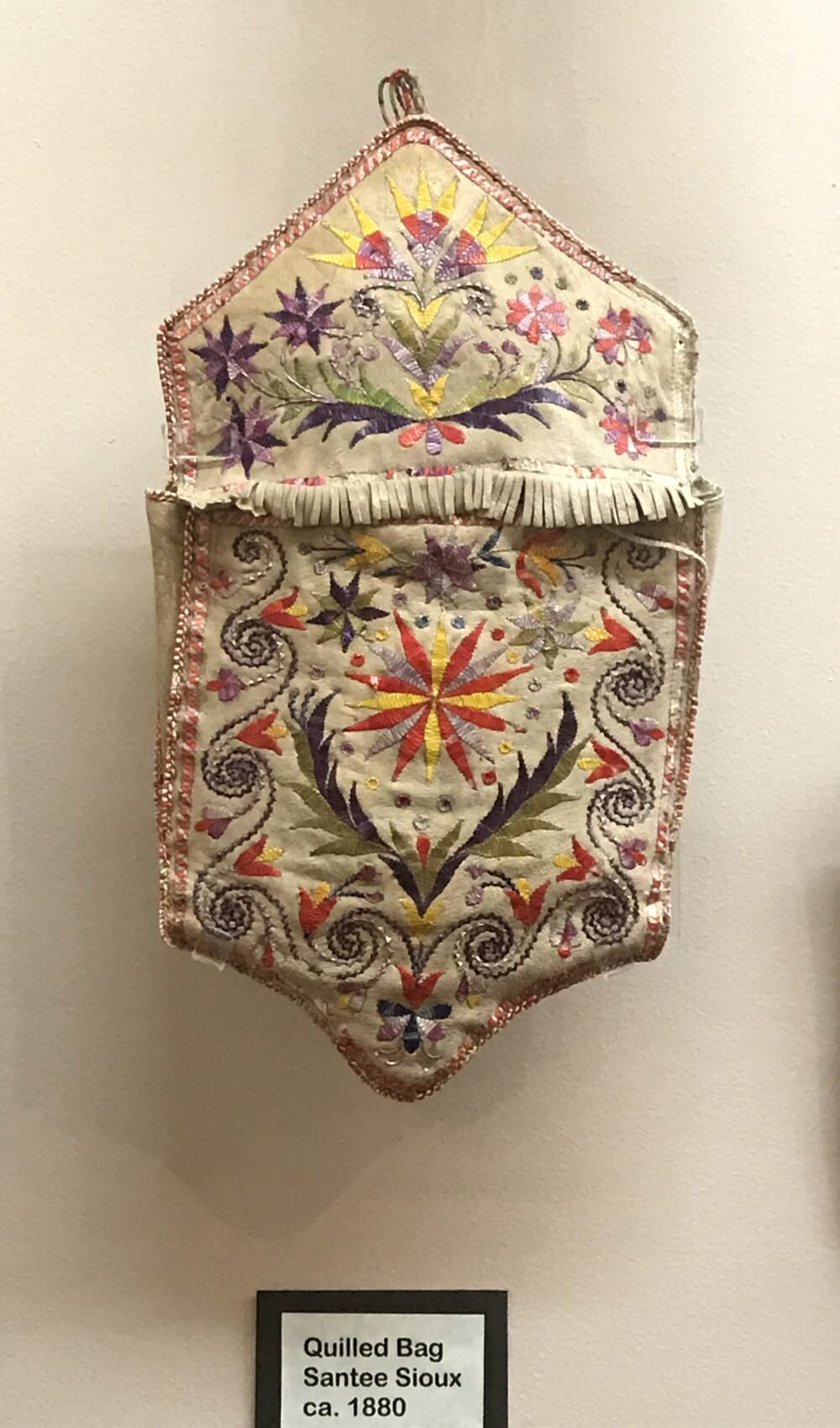
The Nelson Museum of the west is a private museum. To quote from its website:
"The collection itself was designed by our Founder Robert L. Nelson to show visitors a broad spectrum of our older western cultures. Cowboy, Charro, Art, Native American and Military aspects of the west were carefully studied and needed artifacts put on a list for acquisition. The collection grew through the 1970s, 1980s and in 1998, the museum was opened to the public. Many Collections are very deep. Our collection is very wide! Each spur, saddle, firearm and artifact was added to the collection for a purpose. Each was added to make the story more complete. At this writing and including the 4000 book library, the collection totals over 14,000 items."
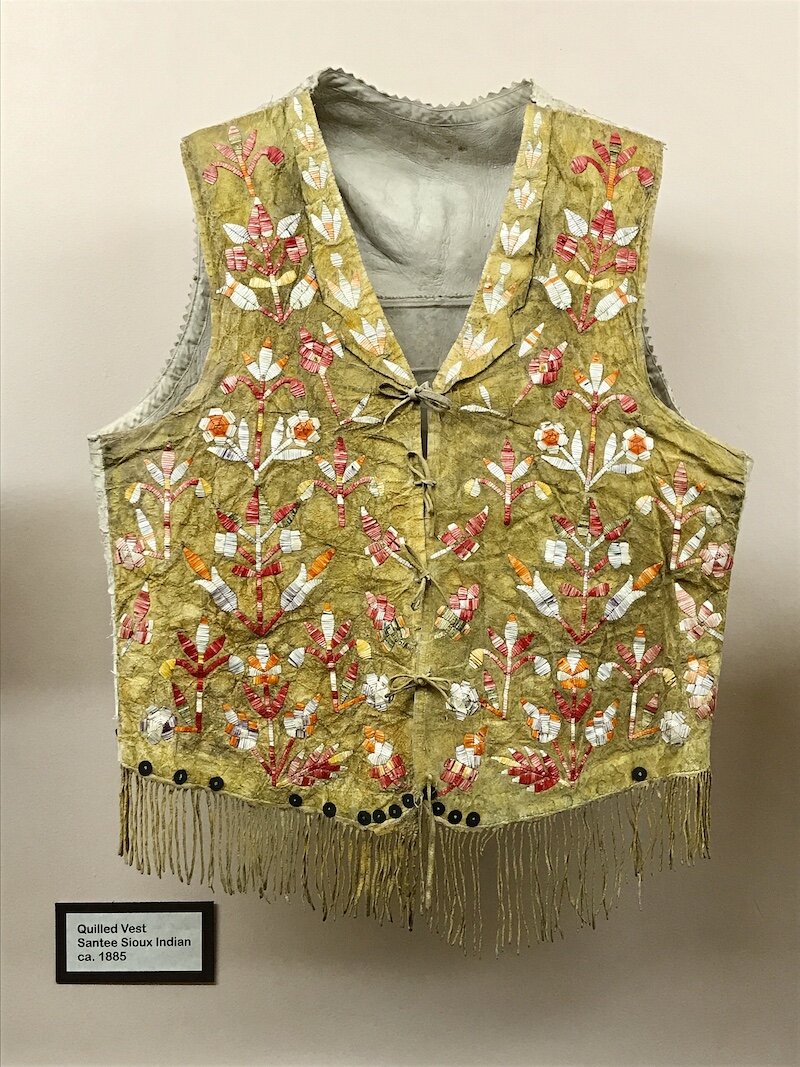
We didn't know what to expect, but had heard that the collection was special. We weren't disappointed! Of course, my favourite exhibits were of ornamented pieces of clothing. The first exhibit in a large, well lit glass case included a display of quillwork done by people from the Plains tribes, many done by the Sioux.
I was struck by how similar the motifs on the vest, above, are to embroidery found on vests and coats from Europe! Flowers, leaves and vines in beautiful colors adorn this vest.
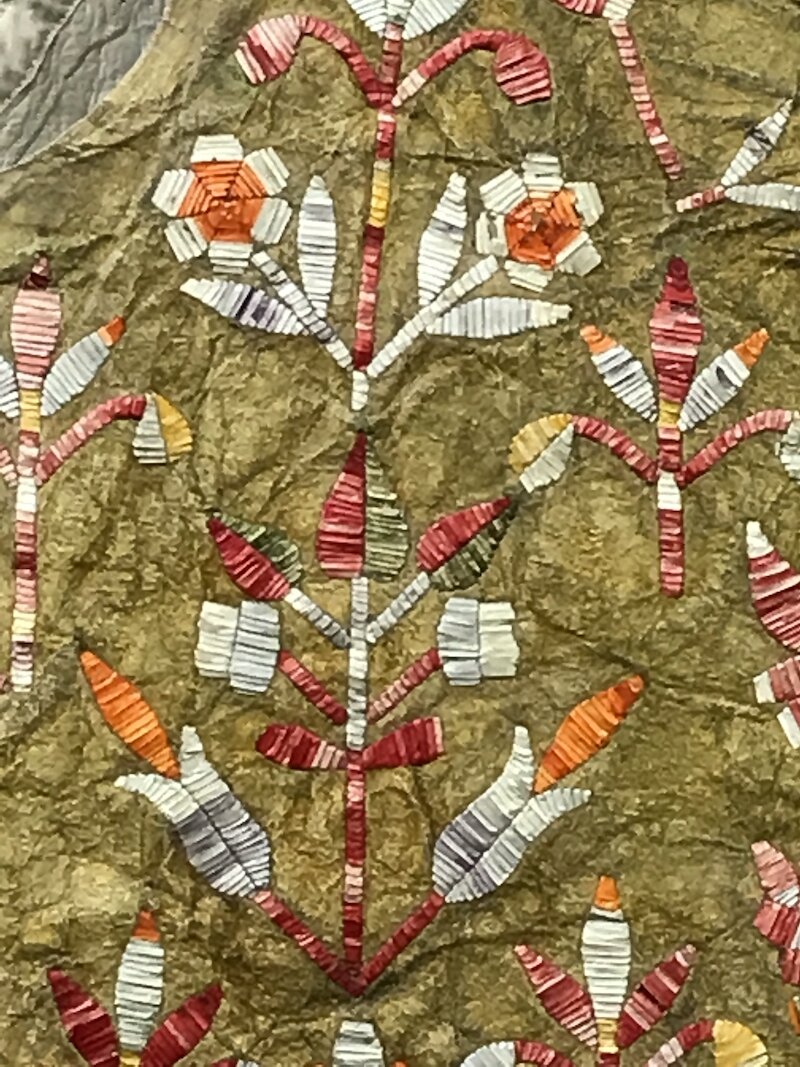
Here's another vest with different designs and colors.
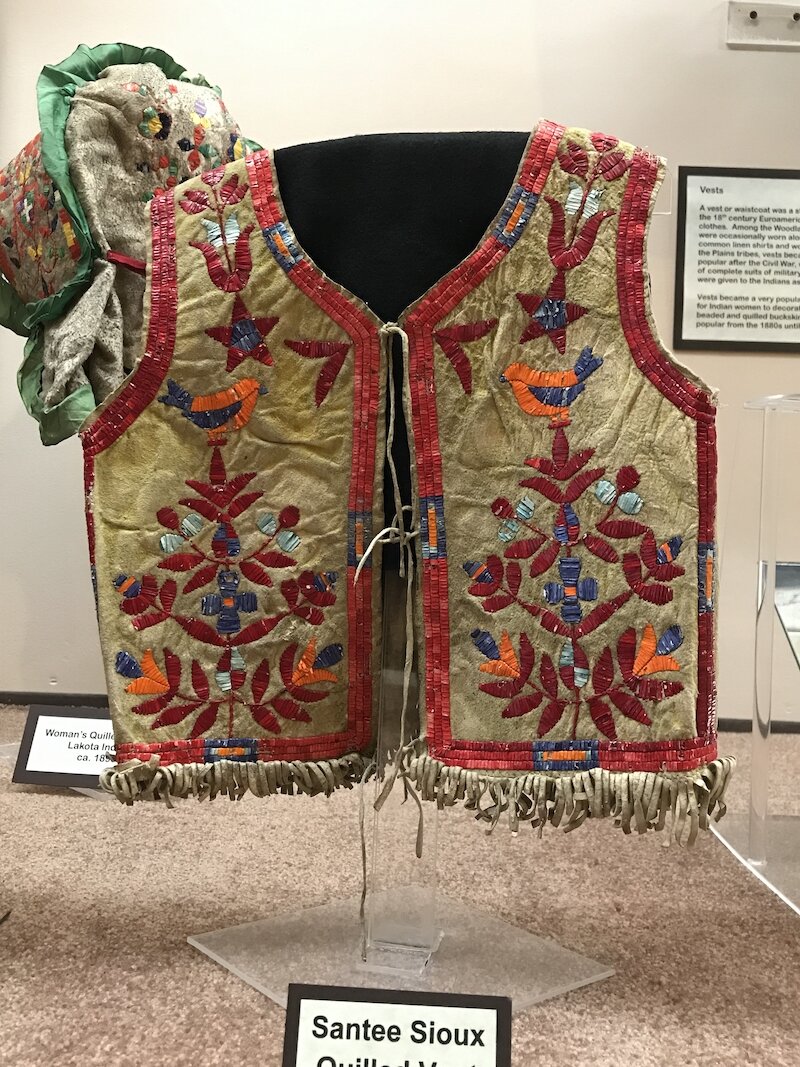
I know absolutely nothing about how to do quillwork. Naturally, I looked it up and found numerous articles about the technique, the meaning of the motifs, how to process and dye the quills...the information is endless.
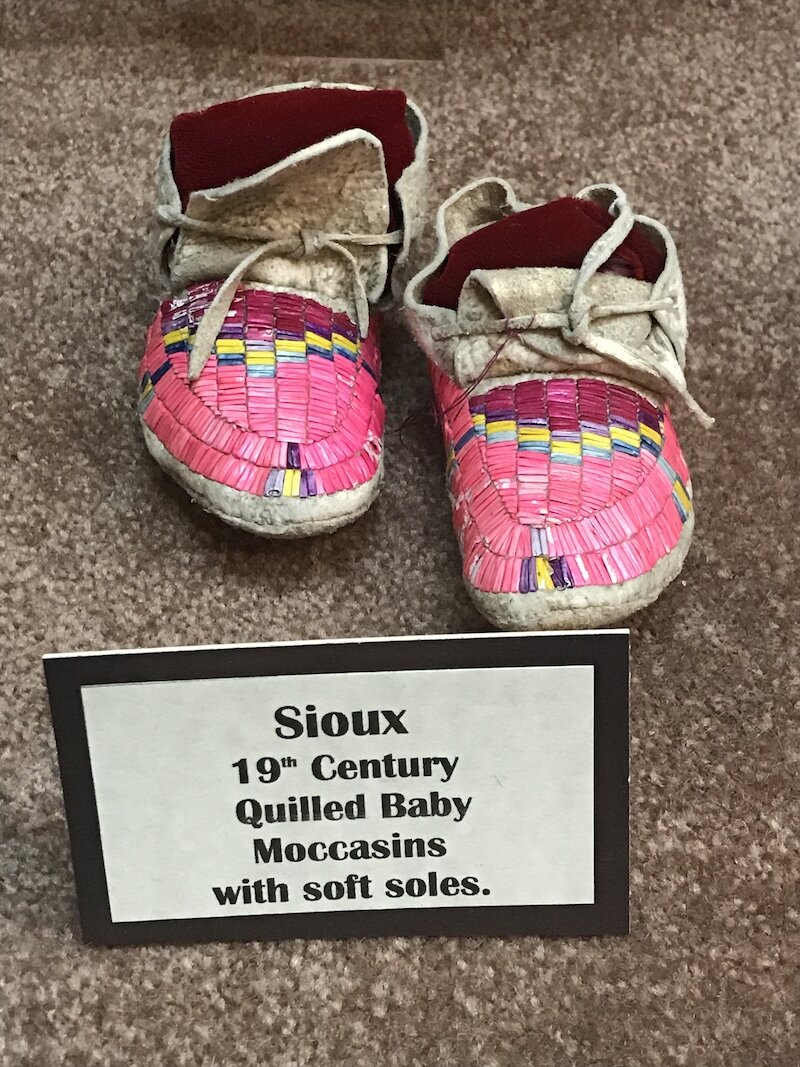
This technique is unique to North America, so far as I could discover. Porcupine quills are used and the work was often done on rawhide, as you see on the vests, above. Apparently, it could take up to a year to finish a complex piece.
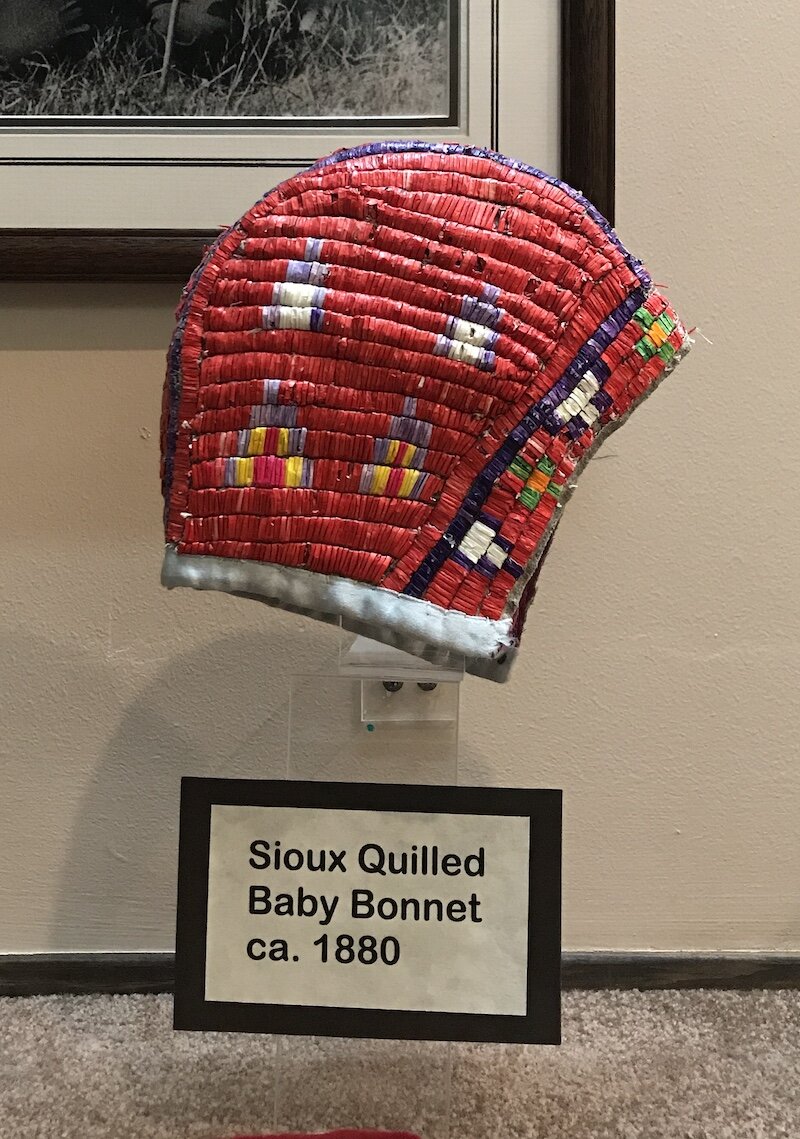
Many of the sites with information also sell quillwork. Here is one site that has good information with minimal advertising: Quillwork: A Vanishing Native American Art

When commercial beads became widely available, Native Americans stopped using quills and began to use beads. The designs can be similar but the time involved to produce a beaded piece is far less than for a quill worked piece.
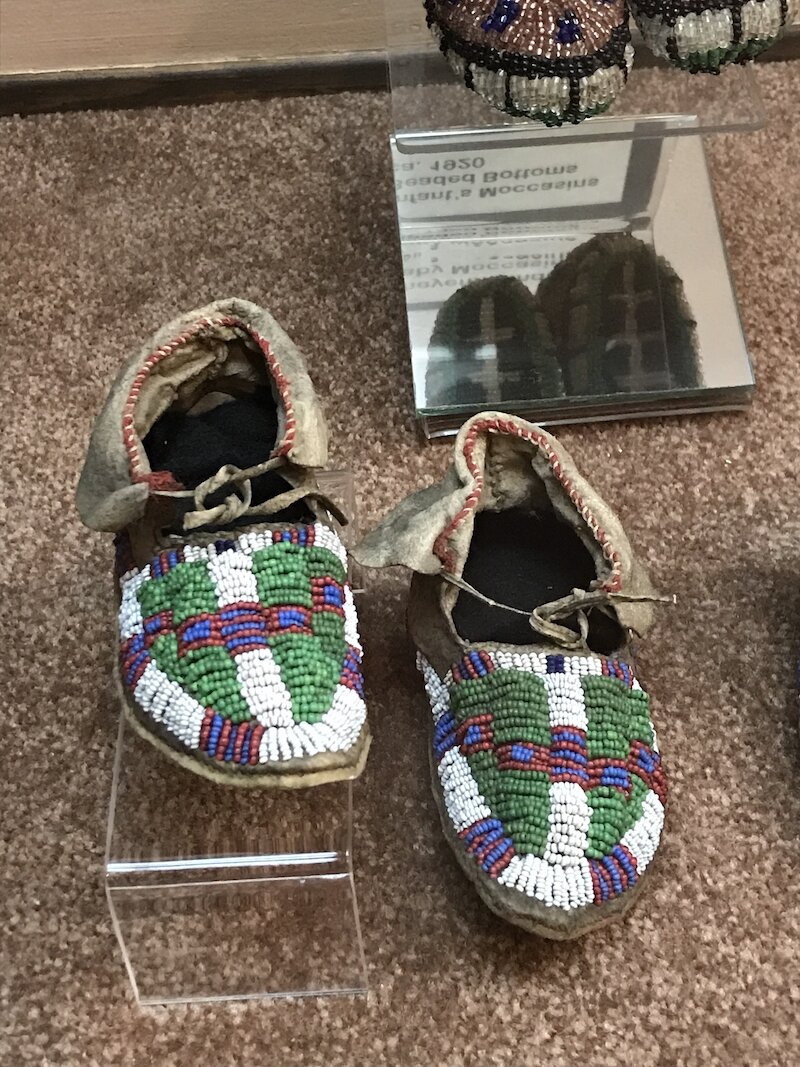
The saddlebag, below, is heavily beaded on rawhide. Notice that the designs of both quillwork and beading could be worked in satin stitch. If one imagines each row of beads or quills as satin stitch, it's easy to see how these designs could be worked with thread on fabric.
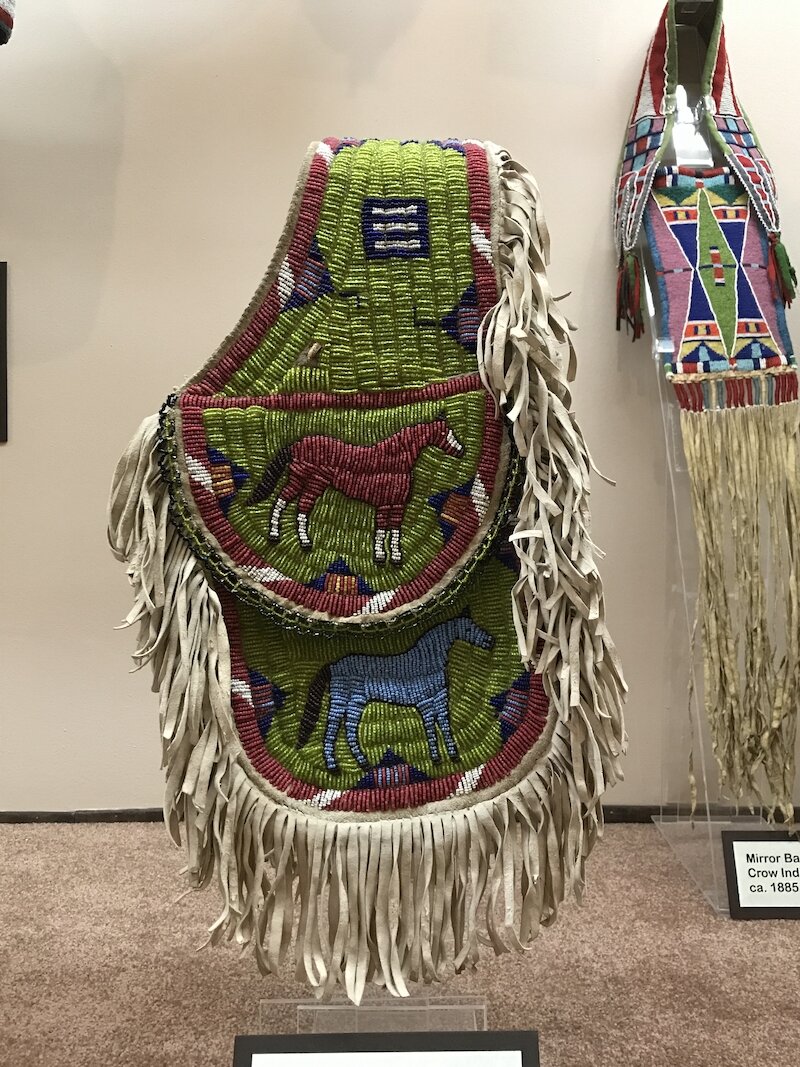
One of my favourite pieces of beading was the little doll, below.
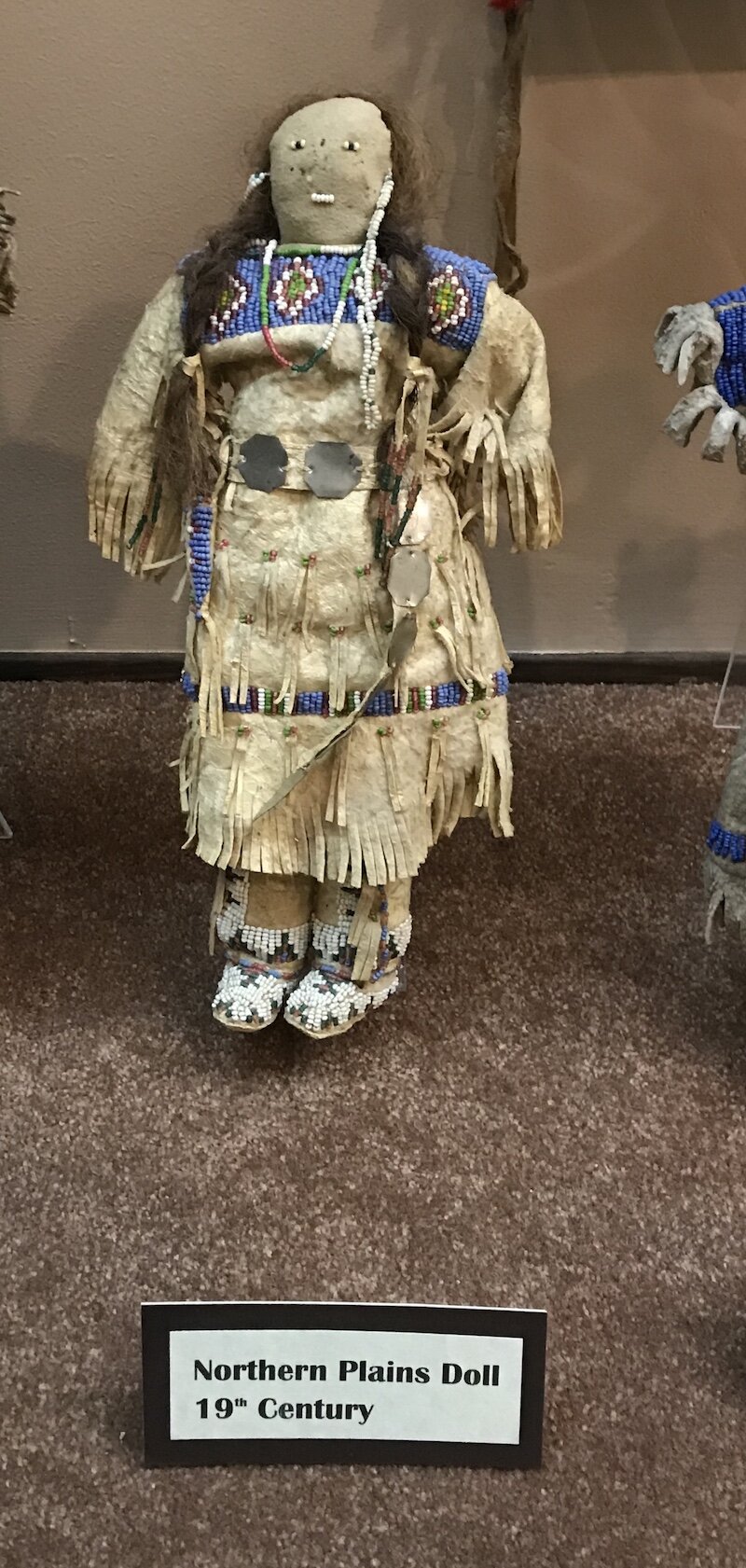
In addition to the Native American pieces, there was one piece from Mexico that caught my eye.
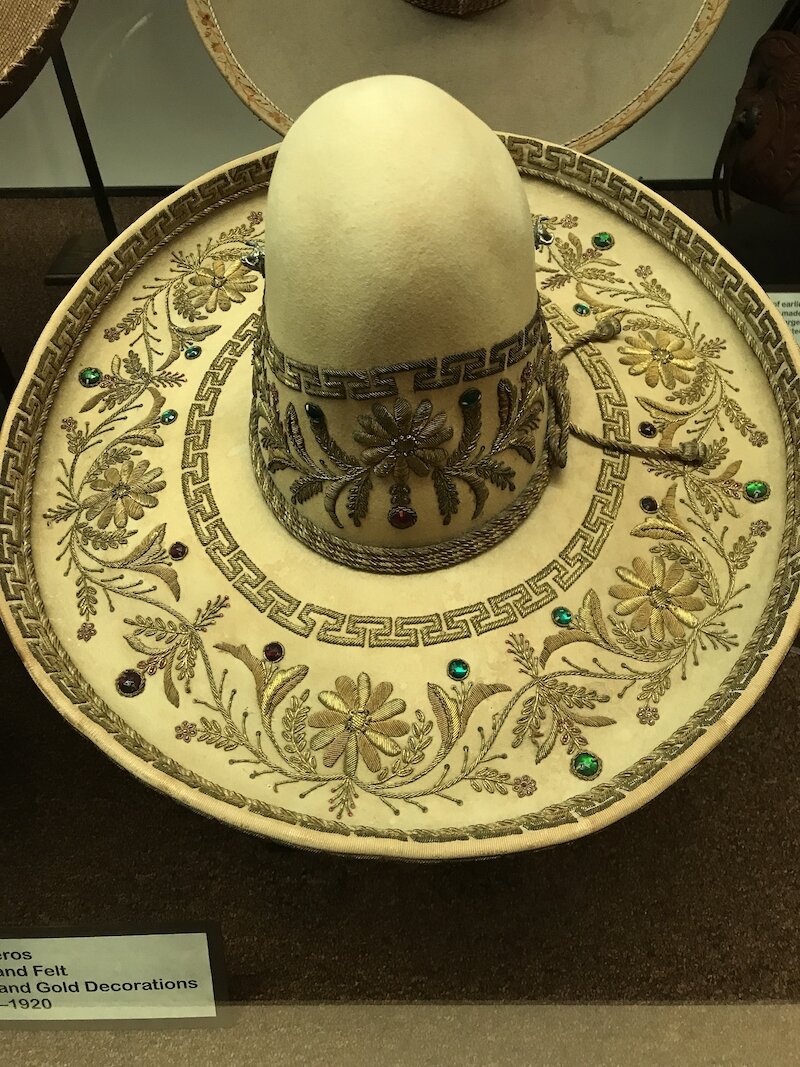
In one display case full of Mexican artefacts, I spied this beautiful sombrero covered in goldwork and "jewels".
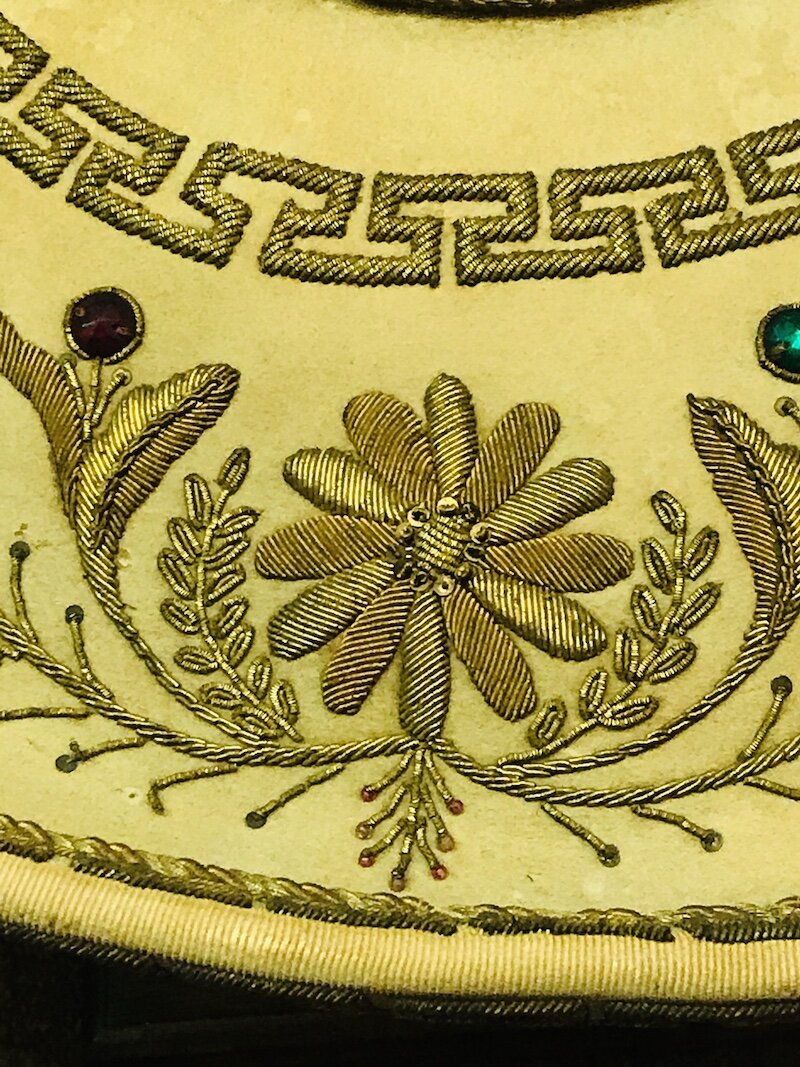
The workmanship is just fantastic! Note how beautifully every single piece of gold thread lies flat against the felt of the hat.
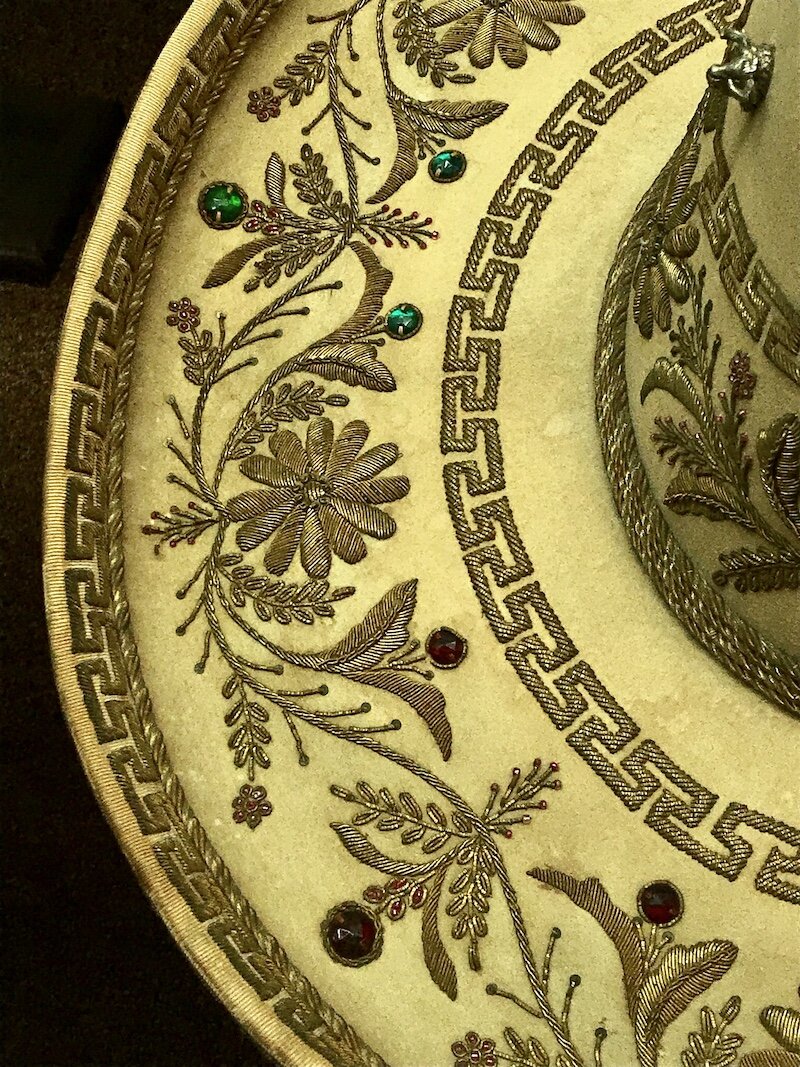
Just imagine how it must have shown and sparkled in the clear, bright sunlight!
How lucky to have found such beautiful pieces by accident! Have you ever come across something you didn't expect in the textile work, in a place you didn't imagine you would find it? Share your experiences with us in the comments below!